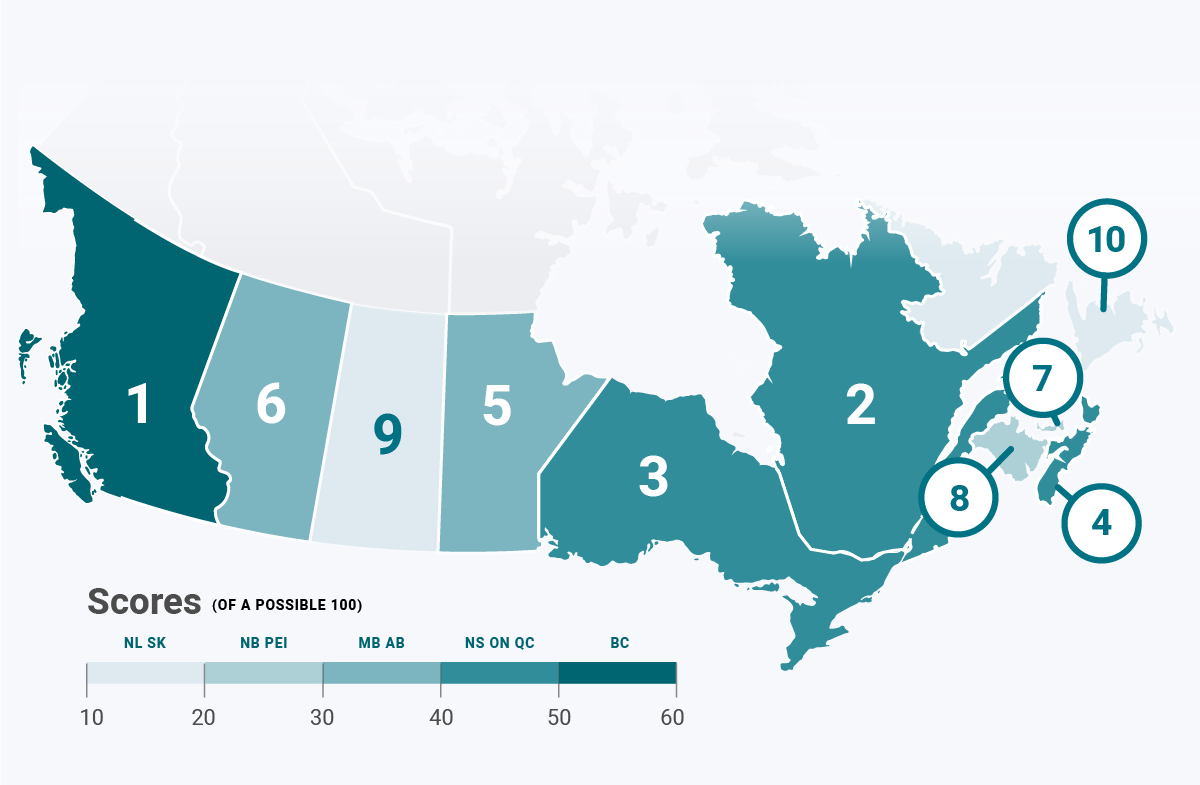Canada Energy Efficiency Scorecard 2019 - British Columbia & Alberta
Provincial Energy Efficiency Policy Scorecard Rankings Highlights
WRITTEN BY ANGELICA SYIEMIONG PEREIRA ∙ TORONTO, ONTARIO
Energy Efficiency is one of the best strategies to tackle climate change and help utilities avoid investing in unnecessary energy generation. The cost of new energy generation is much higher than the cost of improving the energy efficiency of homes and businesses -- and the rewards are greater. Efficiency Canada’s recently published Provincial Energy Efficiency Scorecard is a Canadian version of the U.S.’ scorecard released annually by the American Council for an Energy Efficient Economy.
The scorecard highlights and ranks each province based on 5 key metrics: energy efficiency programs, enabling policies, transportation, buildings and industry.
We’ve summarized the province-by-province highlight, and will be sharing them on our blog over the coming weeks:
British Columbia
Overall Score: 59/100
Ranking: 1st
British Columbia holds the #1 rank in Canada’s first Provincial Energy Efficiency Scorecard. The province leads in enabling and supporting policies such as carbon pricing, grid modernization and vehicle electrification as well as its efforts to improve building code and industry capacity building.
A big win for British Columbia was the adoption of the BC Energy Step Code as a regulation in April 2017. This new tool was designed to help industry and government create a clear path towards net-zero energy-ready buildings by 2032. The BC Energy Step Code is a performance-based standard as opposed to other prescriptive building codes, helping the province achieve its energy efficiency goals.
British Columbia had the lowest % of all households in the province spending more than 6% of their after-tax income on home energy costs. The province is also just one of two to require demand side management programs for low-income homes and modified their cost-effectiveness tests to accommodate them.
The early adoption of Advanced Metering Infrastructure and its comprehensive deployment led to more than 99% of BC Hydro customers installing smart meters by December 2016. With the second highest number of EV/RHEV registrations in the country, the province has moved ahead in vehicle electrification due to the provincial government funds available for point-of-sale incentives and their support of private and public charging infrastructure.
By scaling back its budgets on electricity savings in recent years, the annual energy efficiency target of 0.5% of sales is well below all leading American states and Canadian leaders. The province also currently does not have any programs and policies in place for Non-regulated fuels. Though British Columbia is the leader in Energy Efficiency in Canada, it was not able to score more than 60 points out of 100.
Alberta
Overall Score: 30/100
Ranking: 6th
Albert saved 0.8% of electricity domestic sales from new measures installed in 2017 while British Columbia only saved 0.6% of their domestic sales. The abrupt closure of programs earlier this year damaged consumer confidence and industry capacity created uncertainty, affecting the overall energy savings of the province.
The province of Alberta has no official energy saving target, however the province is a leader in energy upgrade financing. Implementing energy efficiency upgrades financing through Local Improvement Charges (LIC) or Property Assessment Clean Energy (PACE) is in effect in Alberta. About 32% of the total commercial and institutional floor area has been benchmarked in the province to date owing to municipal leadership.
Large Commercial and Industrial customers in Alberta with peak demand over 2 megawatts account for 70% of consumption, these customers are required by law to have smart meters, benefitting the provinces AMI initiatives. Alberta has scope for vast improvements in their Code Compliance activities and Appliance and Equipment Standards.
Albertans require stronger energy policies in place to help them save on energy coupled with an annual integrated energy efficiency plan for both electricity and natural gas to allow consistency in savings.
We’ll be covering the rest of the Canadian Provinces over the coming weeks on the blog. Can’t wait? Check out the full report here.


